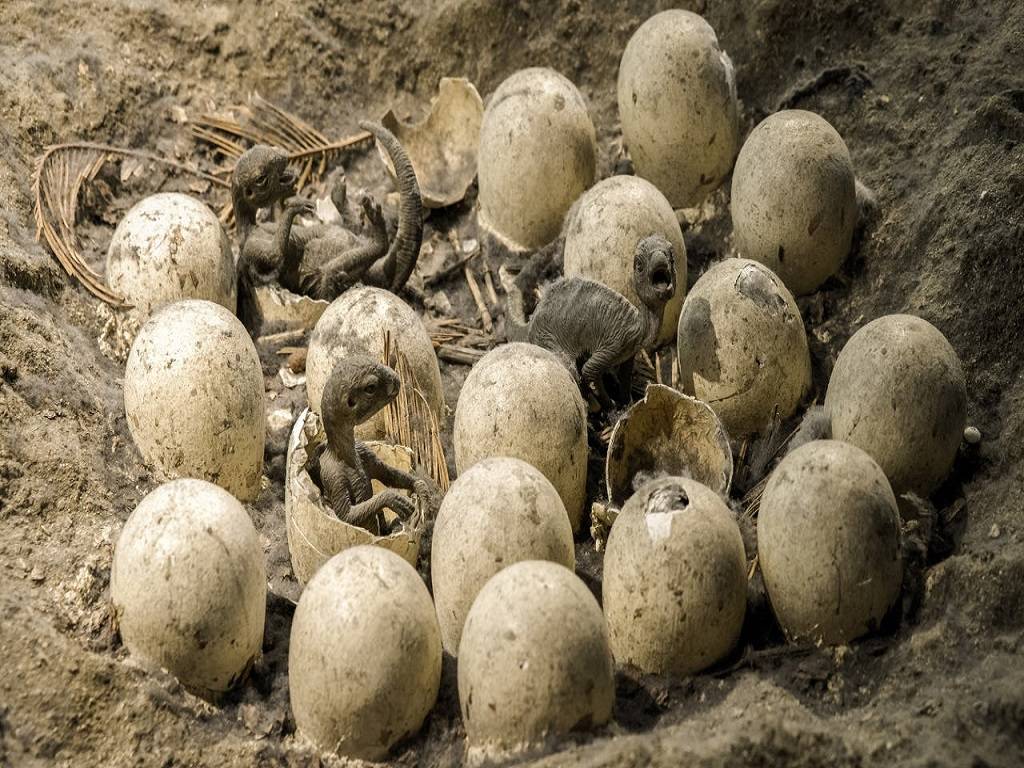
A team of researchers from Delhi University and Dhar district's Higher Secondary School went on a field trip in Madhya Pradesh not long ago. But the three had no idea that history would repeat itself and that they'd come across a Titanosaur nesting site that would revolutionize all we thought we understood about dinosaur reproduction!
The “Egg-In-Egg” Discovery
The crew discovered 52 nests at Padlya hamlet, which is close to Bagh town. They discovered eleven eggs in the one labeled 'nest P7.' However, one of those eggs stood out from the rest of them. Harsha Dhiman, Guntupalli Prasad, and Vishal Verma discovered the first known occurrence of ovum-in-ovo or egg-in-egg in a reptile species, making their finding extremely significant.
This Russian doll-like egg has two circular eggshell layers that are separated by a large gap. According to a study, "the cross-sectional contour of the pathologic egg displays physical organization of the two shell layers comparable to the ovum-in-ovo eggs previously documented in birds."
This raises the notion that Titanosaurus evolved from sequential egg-laying. This sort of egg is only seen in birds and happens when one egg is forced back into the mother's reproductive canal and becomes lodged with another newly formed egg.
The analysis revealed that dinosaurs possessed reproductive biology comparable to that of birds, contrasting to prior descriptions that stated dinosaur reproductive systems were more akin to those of turtles and other reptiles.
"We hypothesize that ovum-in-ovo pathology is not exclusive to birds, and that sauropod dinosaurs pod dinosaurs possessed reproductive architecture more comparable to archosaurs like crocodiles and birds, rather than non-archosaurian reptiles like turtles and lizards," the authors said in the report.
It's not the first time that dinosaurs have been compared to birds. There have been reports that chickens and ostriches are the Tyrannosaurus rex's closest surviving cousins.
















